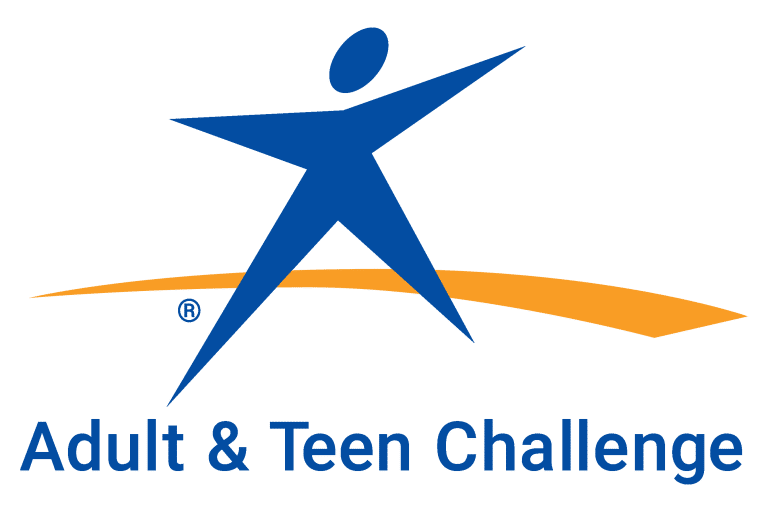There are many steps to take in order to write a successful grant proposal. If you are determined to be effective in your writing, there are several important items you should consider.
- Do your research to identify foundations who have shown a positive interest in similar work like Teen Challenge. Check their giving history report off their web pages, or tax records, so you can identify the size of gifts they make and the time of year they make them.
- Find out who serves on their Board to see if you have any common friends.
- Visit the foundation office to introduce the ministry and yourself. This meeting isn’t for the purpose of making a presentation, but to put a face with the future proposal, or letter of inquiry, you will be sending.
- After a visit, follow up with an email, then a written note with your business card. If you have determined the foundation still has an interest in programs like Teen Challenge, in your note thank them for the visit and their consideration of a grant to Teen Challenge. If the foundation expresses no interest in Teen Challenge, still send them a thank you letter. Remember, a “No” answer is just a “Not Now” for your plans. (Illus. Teen Challenge of South Dakota continued to work with a major gift candidate for 6 -7 years before he finally said, “Yes.”)
- Send a letter of inquiry, or a proposal, depending on what you learned from your first visit. (If possible, drop by the foundation office and personally deliver your documents.) If the foundation is too far away, mail it, or email it, depending on the foundations written procedures.
Note: The purpose of a follow up letter is to develop the relationship with the foundation leadership so they will know you the next time you visit or send a proposal.
The above five steps are what would usually happen, in a nutshell, but. . . what about the contents of your proposal?
Years ago, Lisa Rudy, a grant proposal trainer from Sumac Research taught students what to do and not do when writing a grant proposal. I’ll take some of her teaching and pointers from an article Sumac Research sent out not long ago.
- Review your proposal statements for accuracy and promises
- Some proposals have comments like the following, which a grant reviewer will have to consider as they review the proposal:
- This project is worthy and will succeed.
- — We will reach and teach families across America.
- Our project will improve community awareness of the importance of art and culture.
- The YMCA will develop and present an online training program for physical and occupational therapists.
- The program will run in community locations.
- Our organization started up in September, and plans to house 500 homeless families by February.
- Maybe you can see some of the things wrong with these statements, but let’s look at them as a grant reviewer might see them. Consider that most foundations get stacks of grant proposals every week. Let’s also assume every proposal has all the right paperwork, signature, and budget in the packet. How do you think the reviewer will decide which of the many worthy proposals should be funded?
- Some proposals have comments like the following, which a grant reviewer will have to consider as they review the proposal:
- Be specific about the purpose and goals of your project
- When a grant reviewer reads the first statement above, “this project is worthy and will succeed,” there will come some questions. “Why is the writer bothering to tell us it is worthy and will succeed?” “If this writer doesn’t really believe the project is worthy and will succeed, why are your writing us?” So, if you know your project IS worthy and important, you should be providing specific information about HOW and WHY this is the case. It would be better to make statements like:
- This project builds on prior success and will have a significant and positive impact on the quality of life for each individual who completes this program. This will be seen in their work and home relationships.
- This program addresses a 30% dropout rate in the local high school by creating a carefully crafted mentorship and tutoring program at our center.
- When a grant reviewer reads the first statement above, “this project is worthy and will succeed,” there will come some questions. “Why is the writer bothering to tell us it is worthy and will succeed?” “If this writer doesn’t really believe the project is worthy and will succeed, why are your writing us?” So, if you know your project IS worthy and important, you should be providing specific information about HOW and WHY this is the case. It would be better to make statements like:
- Set achievable goals
- No one- not Google, not the New York Times, not Dr. Oz – can reach “families across America.” Every outreach method has its limits, and every project should have a target audience. When you make a statement like “we will reach families across America,” you are letting the grant reviewer know that (1) you don’t know who your target is, and (2) you don’t understand what it would take to actually achieve your stated goal.
- It would be better to realistically look at the “pie in the sky” idea and whittle it down to something you can actually support. That means, you will have to figure out what you think you can realistically do, then describe your plans accordingly. For example: We will use direct mail, online marketing, and radio ads to reach families with school-aged children in the Orlando area offering dates and times for them to attend classes at our center.
- Have measurable objectives
- A statement like “Our project will improve community awareness of the importance of art and culture” immediately raises the question “how in the world will you measure that?” If you answer, “Uh, I don’t really know, but I know it will raise awareness,” you aren’t ready to submit a proposal.
- Rudy commented, “It is possible to measure things like awareness and public attitudes, but the process isn’t simple –and it’s rarely cheap. You’ll need to conduct interviews, do case studies, and otherwise collect data, both before and after, to find out what impact you’ve had. Do you really want to do that? If not, you may want to reconsider or reword your statement.” For example:
- Project participants will expand their knowledge of artistic and cultural resources in the area as they attend seminars, tour events, and lectures on relevant artists which will encourage them to participate in the arts.
- Make sure you can show you are qualified for the project you are presenting
- “The YMCA will develop and present an online training program for physical and occupational therapists.”
- Wow! Really? Is that true?
- A statement like this one implies the YMCA has on its payroll professors who teach physical and occupational therapies. It implies there are certified therapists, instructional designers, computer technicians, videographers, and web designers on staff. A grant reviewer will assume, and I think reasonably so, that the YMCA has none of these specialized people on their payroll. Because of that, they are completely unqualified to take on this type of project.
- On the other hand, if you really want to present a project like this, that seems to be out of the known “mission” on the ministry, it would be better to establish a solid, verifiable collaboration with another organization that is qualified to put the project together and help you run it. For example, if the YMCA said:
- The YMCA is collaborating with Big Dog University to develop an online training program. The staff at Big Dog University will train the YMCA staff to manage enrollment and troubleshoot online issues. YMCA staff will work with Big Dog University to provide on-site opportunities to work with members in their fitness and wellness facilities.
- Have a clear, specific plan
- All too often, grant proposals include statements like “The program will run in community locations.” Fortunately, for Teen Challenge, you have facilities to do some training programs, but let’s assume you don’t have the space.
- If you say the programs will be run in community locations, make sure you explain WHICH locations. The grant reviewer will be asking that question, so answer it in your proposal. They will also be asking, “Are they big enough? Do they have the resources needed to run the program? Do they have an agreement in place to make use of these locations, or are they just hoping for the best?”
- If you really do know where and how your program will run, say so. If you don’t, stop what you are doing with the proposal and find out the answer before you submit anything to a foundation. As an illustration, it might answer the reviewer’s questions by saying:
- Our program will run at the library and community center on Saturday and Sunday afternoons during the months of April through August. Both locations are free for non-profit use, and both offer wireless Internet, sufficient seating, and on-site parking.
- Have a reasonable, believable timeline to present
- Looking back at the above illustrations, “Our organization started up in September, and plans to house 500 homeless families by February.”
- That seems very unlikely to a grant reviewer, unless you can substantially back it up. Their thinking would be something like this. “Did they just purchase a larger hotel that gave them all the beds, sheets, towels, and staff to run and take care of the facility?”
- You would be better off defining what you ACTUALLY need, by determining how many beds you can manage, how long it will take to hire and train staff, how you will reach out and bring in homeless families, and how you will serve them. Then build the realistic timeline in your proposal. If it will take more than a year to complete the project, ask for a grant over multiple years, or build phases into your project plan. For example:
- In phase one, we will use a combination of loans and grants to purchase 151 Elm Street and renovate the property according to code. Plans include new HVAC, renovation of kitchen and dining facilities, and construction of ramps and other ADA-compliant elements. This project will begin in September, and is expected to be complete by the following August.
As you consider your efforts to seek grants, make sure you have gone through all the steps in your planning. Send your rough draft to someone not involved in the project, but who can think critically about what is written. In doing this, you will be in a better position to have a proposal that will not only be read, but have all the questions answered so funding is just a matter of when to send the grant check.






